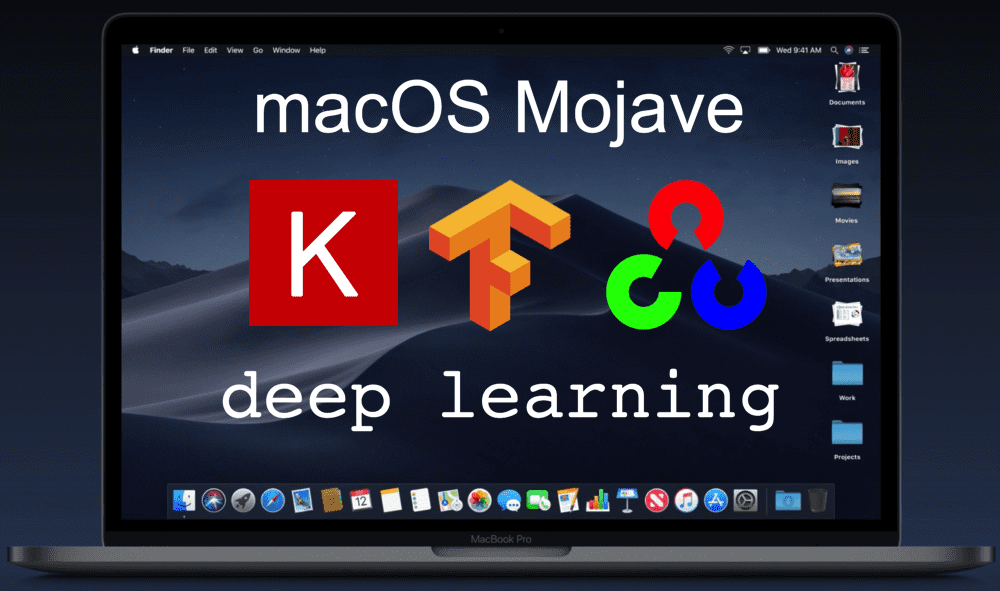You can choose from icon, list, column, or Cover Flow view. In Cover Flow view, the browser is split horizontally into two sections. The top section is a graphical view of each item, such as folder icons or a preview of the first page of a document. The bottom section is a list view of the items.
Java programming is a great thing to learn - and your Mac is the perfect place to get started. Java is by far the most popular programming language in the world, and OS X is a fantastic. RStudio is a set of integrated tools designed to help you be more productive with R. It includes a console, syntax-highlighting editor that supports direct code execution, and a variety of robust tools for plotting, viewing history, debugging and managing your workspace. Open the Application Chooser by pressing VO-F1-F1 or, if you're using VoiceOver gestures, double-tap near the left edge of the trackpad. Choose Finder in the Application Chooser. You can also use Mac OS X shortcuts by pressing Command-Tab and then using the arrow keys to navigate to the Finder. If a Finder window was open, you go to that window.

To jump, press VO-J. If you're using VoiceOver gestures, keep a finger on the trackpad and press the Control key.
Icon view: Use the arrow keys to move to the item you want.
List view: To move down the list rows, press VO-Down Arrow. To expand and collapse a folder, press VO-. To move the VoiceOver cursor across a row and hear information about an item, press VO-Right Arrow. Or press VO-R to hear the entire row read at once.
Column view: To move down the list until you find the folder or file you want, use the Down Arrow key. To move into subfolders, press the Right Arrow key.
Cover Flow view: To flip through the items in the top section and move automatically through the corresponding list rows in the bottom section, press the Left Arrow or Right Arrow key.
When you find the file or folder you want to open, use the Finder shortcut Command-O or Command-Down Arrow to open it.VoiceOver announces when you have selected an alias or a file or folder you don't have permission to open.
Mac OS X Enterprise Course Outline
Learn Your Science Mac Os Download
Mac OS X Overview
- Installing OS X
- Configuring OS X clients and servers
- Establishing requirements for interoperability
- Setting the stage for the enterprise
Navigating the Mac User Interface
Server operating system features
- File Sharing Services
- Client Management
- Networking Services
- Directory Services
Ropeslinger v.2 mac os. Administering the file system
- Managing the file system with Finder
- Uncovering the underlying UNIX file system
- Manipulating advanced file system attributes
Installing Mac applications
- Examining installation methodologies
- Monitoring application health
- Comparing Mac and Windows application architectures
Running Windows on the Mac platform
- Virtualizing OS installations with Vmware
- Booting Windows natively with Bootcamp
Managing OS X Network Integration
Setting network preferences
- Establishing appropriate protocols for communication
- Activating network devices: Ethernet, AirPort
- Modifying preferences for Internet & Wireless
User account administration
- Adding and managing users
- Defining security settings for user accounts
- Preparing users for directory integration
Creating OS X and Windows workgroups
- Sharing files between Macs
- Setting permissions on file system objects
- Connecting Macs with SMB and AFP protocols
- Introducing SMB for PC connectivity
Sharing system resources
- Printer sharing
- Screen sharing
- Web sharing
- FTP
- Remote Desktop sharing
Building Centralized Directory Services
Integrating OS X into Active Directory (AD)
- Implementing LDAP services: AD and Open Directory
- Configuring AD for Mac integration
- Introducing iOS devices into the enterprise
Configuring directory services on an OS X client
- Leveraging Directory Utility for enterprise access
- Activating AD plug-in and Open Directory components
Cupids arrow inc. difficult cases division (solitudedude) mac os. Managing OS X clients with Open Directory (OD)
- Centralizing administration with a Mac server
- Working with the Server Admin and Workgroup Manager
Integrating Mac OS X and Windows
Administering network resources and clients
- Building AD Users with the (ADUC) tool
- Integrating directory services with Workgroup Manager
Managing Mac desktop preferences
- Establishing distribution group architectures
- Pushing preferences with Profile Manager
Creating directory redundancy
- Replicating the Open Directory
- Specifying Master/Replica configuration
Accessing desktops remotely
- Microsoft Remote Desktop Connection
- Apple Remote Desktop
Maintaining Enterprise Services
Building enterprise DNS for AD and OD
- Establishing the primary DNS architecture
- Resolving DNS names across platforms
Synchronizing time services
- Aligning time services for authentication
- Configuring W32Time and SNTP
Authenticating users with Kerberos
- Establishing Kerberos authentication paths
- Investigating Kerberized applications
Ensuring enterprise integrity
- Leveraging Disk Utility for backups and imaging
- Centralizing backups to a server

